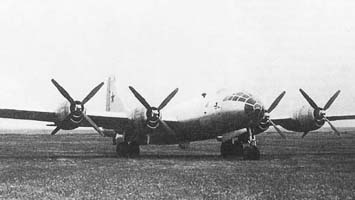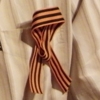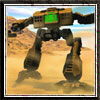-
Блоги
Вчера получил письмо от своего сонародника, вот перевод:
Я был весьма удивлен, увидев, что болгарин сотрудничает с таким авторитетным сайтом. Обращаюсь к Вам с просьбой, которую адресовал уже г-ну Каршиеву**, но ввиду своего ужасного русского языка хотелось бы ее повторить, чтобы я не остался непонятым. Я сотрудничаю с сайтом http://www.ordersofbattle.cjb.net, там есть и мой адрес для англоговорящих. Я был весьма впечатлен представленными данными о расположении 4 и 16 воздушных армий, о дальней авиации и другими данными из раздела Авиачасти. Если бы данные присутствовали в английской версии, просто сделали бы линки, но их нет.
Просим разрешения перевести и опубликовать, при том будет изрично указано авторское право. Политика сайта в этом отношении особо щепетильна, если Вы его рассмотрите, убедитесь сами.
Наверное, Вам интересно будет узнать, что кто-то анонимно нам выслал 58 страниц информации о сухопутных войсках и ВВС России, которые постепенно представляем. Армейская авиация и ВВС уже представлены.
Прошу Вас помочь, если нужно - объяснить г-ну Каршиеву мою просьбу. Если вы требуете гарантии авторских прав от редактора сайта, то его зовут Рави Рикхи, rikhye1 hotmail.com, но пишите по-русски.
hotmail.com, но пишите по-русски.
С уважением:
…
Дальше »»»
Уважаемый г-н Пешков*,
Я был весьма удивлен, увидев, что болгарин сотрудничает с таким авторитетным сайтом. Обращаюсь к Вам с просьбой, которую адресовал уже г-ну Каршиеву**, но ввиду своего ужасного русского языка хотелось бы ее повторить, чтобы я не остался непонятым. Я сотрудничаю с сайтом http://www.ordersofbattle.cjb.net, там есть и мой адрес для англоговорящих. Я был весьма впечатлен представленными данными о расположении 4 и 16 воздушных армий, о дальней авиации и другими данными из раздела Авиачасти. Если бы данные присутствовали в английской версии, просто сделали бы линки, но их нет.
Просим разрешения перевести и опубликовать, при том будет изрично указано авторское право. Политика сайта в этом отношении особо щепетильна, если Вы его рассмотрите, убедитесь сами.
Наверное, Вам интересно будет узнать, что кто-то анонимно нам выслал 58 страниц информации о сухопутных войсках и ВВС России, которые постепенно представляем. Армейская авиация и ВВС уже представлены.
Прошу Вас помочь, если нужно - объяснить г-ну Каршиеву мою просьбу. Если вы требуете гарантии авторских прав от редактора сайта, то его зовут Рави Рикхи, rikhye1
С уважением:
…
Дальше »»»
SPK
новичок
 Недавно умудрился завалить Ф-16 ... пушкой!!! Случайно, конечно, но приятно. "Вихрей" и "Игл" уже нет, лечу домой, вижу по карте " быструю цель", иду на перехват, когда она по карте близко резко вздергиваю нос и прицел ее захватывает. Жму на гашетку и успеваю отправить очередь на встречном курсе. Потом стабилизирую свое хозяйство, разворачиваюсь и вижу ... дымный след в небе и огонь на склоне. Переключаюсь на карту 6 "нет синего" !!! Получил за этот полет Орден Ленина. Так что обсуждавшийся здесь эпизод с Ми-24 и Фантомом - это еще цветочки.
Недавно умудрился завалить Ф-16 ... пушкой!!! Случайно, конечно, но приятно. "Вихрей" и "Игл" уже нет, лечу домой, вижу по карте " быструю цель", иду на перехват, когда она по карте близко резко вздергиваю нос и прицел ее захватывает. Жму на гашетку и успеваю отправить очередь на встречном курсе. Потом стабилизирую свое хозяйство, разворачиваюсь и вижу ... дымный след в небе и огонь на склоне. Переключаюсь на карту 6 "нет синего" !!! Получил за этот полет Орден Ленина. Так что обсуждавшийся здесь эпизод с Ми-24 и Фантомом - это еще цветочки.  ))
))
26 января 2001 г.
Правительство России решило принять на снабжение Вооруженных сил РФ вычислительный комплекс "Эльбрус-90микро", сообщает ДПИ. В связи с этим принято решение об организации серийного производства вычислительного комплекса в акционерном обществе "МЦСТ", которое является головной организацией по изготовлению, обеспечению поставок, проведению централизованного ремонта комплекса. Согласно постановлению, АО "МЦСТ" осуществит доработки, связанные с поэтапной заменой комплектующих элементов зарубежного производства на отечественные аналоги, а также окажет Министерству обороны РФ техническую помощь в освоении и эксплуатации вычислительного комплекса.
vjick
опытный
delt
новичок
миссии и кампейны(?) к WC 4(если они вообще есть в природе).
То же самое по Profecy(WC 5).
Вот еще адресс http://mars.jpl.nasa.gov/2001/orbiter/webcam1.html
Dron
втянувшийся

Investigations are underway involving an
AN-70 crash at about 6 o'clock early morning on Saturday. The aircraft was
second prototype of the kind built and was on its way from Kiev to Yakutsk for
tests in extreme cold conditions.
The AN-70 arrived to Omsk about 0:30 local time. The plane was refueled with 38
tones of gas, after which it took off at 5:38am heading to Yakutia. Several
seconds after the take-off two out of four engines failed and the aircraft fell
into the snow from 20m altitude.
Crash impact caused fuselage to collapse into two. 4 out of 33 people onboard
suffered minor injuries.
The AN-70 is a new generation airlift plane developed jointly by Russia and
Ukraine. First prototype crashed in 1995. Despite new accident, experts point
out excellent aerodynamical qualities of the plane which allowed pilots to
conduct a relatively soft landing, avoiding fuel explosion and human
fatalities.
Federal Security Service refused to comment on possible causes of the accident.
Fuel samples were taken to check for possible crystallization at low
temperatures.
Copyright NTV.ru http://www.ntv.ru/russia/27Jan2001/omsk.html
[This message has been edited by Dron (edited 27-01-2001).]
from http://www.ipclub.ru/space/hotnews/
На борту американского межпланетного зонда "Mars Global Serveyor", совершающего полет по орбите вокруг Марса, возникли проблемы. Представители NASA сообщили, что 18 января вышел из строя один из поворотных механизмов, отвечающих за ориентацию станции. Как полагают, причиной поломки стало короткое замыкание в одной из электрических цепей. В настоящее время ориентацию обеспечивает резервный комплект и наблюдения продолжаются. 31 января заканчивается полетное задание зонда, предусматривавшее проведение картографирования поверхности Красной планеты. В следующие 14 месяцев камеры "Mars Global Serveyor" по-прежнему будут вести съемку марсианской поверхности и на основе полученных данных должны быть выбраны посадочные площадки для аппаратов миссии 2003 Mars Serveyor. После этого предполагается использовать аппарат для ретрансляции сигналов от марсоходов на Землю. "Mars Global Serveyor" был запущен с космодрома на мысе Канаверал в 1996 году.
От себя добавлю что этот элемент - гиродин. Насколько я помню MGS улетал с комплектом из 4 гиродинов (нигде сейчас этой информации не нашел), т.е. имелся всего 1 запасной.
Значит если откажет хотя бы еще один - АМС придется перевести в расходную ориентацию, причем учитывая, что в качестве релейной станции ему желательно дотянуть до середины 2004 (хотя бы) - это означает практически сразу прекращение научной работы.
Напомню - основная миссия MGS - картографирование с низкой орбиты в течении марсианского года заканчивается 31 января - т.е. через 4 дня.
На данный момент уже назначена дополнительная миссия - до апреля 2002.
Manch
втянувшийся
НО зачем государству платить за вертолёт который будет строиться на госудерственном заводе? Платить то придётся самому себе? Или нет? Нет. Платить надо зарплату рабочим. А зачем она им? Чтобы купить еду, одежду, курево, водяру, детям мороженое, бабе - цветы
 . Так понятно, рабочим надо кушать, одеваться, отдыхать. Основное это - еда. Где её взять. В магазине? Ну да. А как в магазин она попадает? По-разному. Рассмотрим примитивный вариант: хлеб. Его пекут из муки. В основном. Мука получается из зерна, которое производит крестьянин/колхозник/фермер. Причём он ПЕРВОИСТОЧНИК. Он берёт некоторое количество зерна, сеет его и получает ещё больше зерна. Т.е. налицо формула З-В-З', Зерно-Время-Зерно_Штрих.
. Так понятно, рабочим надо кушать, одеваться, отдыхать. Основное это - еда. Где её взять. В магазине? Ну да. А как в магазин она попадает? По-разному. Рассмотрим примитивный вариант: хлеб. Его пекут из муки. В основном. Мука получается из зерна, которое производит крестьянин/колхозник/фермер. Причём он ПЕРВОИСТОЧНИК. Он берёт некоторое количество зерна, сеет его и получает ещё больше зерна. Т.е. налицо формула З-В-З', Зерно-Время-Зерно_Штрих.Так.
Выстроили цепочку: Вертолёт - Зарплата - Еда - Зерно. Теперь осмотримся. Ага! Вертолёт делается не из воздуха, а из металла и пр. Где это всё взять? А достанем-ка мы это из-под земли! Но на это тоже нужны деньги. Зачем? На зарплату. А это цепочка уже известная.
Ну всё устал. Одно дело размышлять про-себя, другое - вслух.
 Посмотрим, что народ думает по этому поводу, а потом продолжим.
Посмотрим, что народ думает по этому поводу, а потом продолжим.Manch
Yellow Zeppelin
Alek
опытный
Кто нибудь знает подробности про эту пушку? Что это была за конструкция? Как она должна была наводиться на цель? Чем стреляла? И вообще может ли пушка стрелять в ваккуме и невесомости? Проводились ли когда нибудь такие эксперементы?
У деревни Чукреевки близ Омска в субботу около 6 часов утра по местному времени упал самолет Ан-70, который проводил испытательный полет. На борту самолета находились 32 человека. Как сообщили в государственной службе гражданской авиации Министерства транспорта России, четыре человека госпитализированы с различными травмами, погибших нет.
Самолет совершал рейс по маршруту Красноярск–Омск–Иркутск. Вскоре после взлета из Омска у самолета отказали оба двигателя, и со сравнительно небольшой высоты он упал на заснеженное поле. Самолет получил значительные повреждения. //РИА «Новости»
zluka
втянувшийся
Свежеизбранный президент США Джордж Буш, наложив мораторий на все решения, принятые в последний месяц администрацией Клинтона, сделал лишь одно исключение. Он утвердил постановление, согласно которому с 22 февраля диаметр дырок в "швейцарском сыре Эмменталь" американского производства должен быть уменьшен вдвое. Как разъяснило министерство сельского хозяйства, это сделано для удобства приготовления сандвичей и "маков" - сыр с дырами нового стандарта лучше подходит для нарезки в высокоскоростных аппаратах. "Это решение - путь к краху. Можно лишь сожалеть, что американцы окончательно дискредитируют ...{skip}
РБК, 27.01.2001 www.rbc.ru/rbcfreenews.shtml?/20010127075204.shtml[/small]
500 Internal Server Error
The server encountered an internal error or misconfiguration and was unable to complete your request. Please contact the server administrator at webmasterДальше »»»
Dron
втянувшийся

WASHINGTON — After bombing missions against Japanese targets in 1944, three
troubled American B-29s made emergency landings at the Soviet town of
Vladivostok in southeastern Russia. The U.S. pilots assumed that as allies, they
would be in friendly Russian hands. But they were wrong.
"They didn't realize what was going to happen to the airplanes. But when
you're on fire, you look for a place to land," said George Larson, the
editor of "Air and Space/Smithsonian Magazine."
Soviet leader Joseph Stalin eventually released the crews, but he ordered the
B-29 Superfortresses seized and copied. He put his security chief Lavrenty Beria
in charge of thousands of engineers and workers — using fear and patriotism to
drive the project. Failure could land workers in exile in Siberia.
< !- ======= WRAPPER ======= ->
< !- ======= /WRAPPER ======= ->
The crews dismantled one of the planes into 105,000 parts, created blueprints
and then reproduced the bomber in just two years.
"What he wanted to do was close a vulnerability to the West; to have an
intercontinental, long-range bomber equal to the B-29, which became even more
crucial after 1949 with the first Soviet atomic weapon," explained Von
Hardesty, a museum curator and specialist in Soviet air power at the Smithsonian
Museum.
It was a B-29 Superfortress, the Enola Gay, that dropped the first American
atomic bomb on Japan.
'Phenomenal feat of human engineering'
…
Дальше »»»
Dron
втянувшийся
reuters
"Последнии космические новости"
Как уже сообщалось в 170-м выпуске "Последних космических новостей", американский межпланетный зонд "NEAR-Shoemaker" 24 января года начал серию заключительных маневров перед тем, как 12 февраля он достигнет поверхности астероида (433) Эрос (Eros).
Ниже приводится последовательность включения бортового двигателя в период с 28 января по 12 февраля 2001 года и параметры орбиты станции после совершения маневра.
28 января в 01:20 UTC - 18 х 36 км х 179 град.
28 января в 15:15 UTC - 35 х 37 км х 178 град.
2 февраля в 00:00 UTC - 35 х 37 км х 178 град.
6 февраля в 23:15 UTC - 35 х 37 км х 178 град.
12 февраля в 15:14 UTC - 7,5 х 35 км х 135 град.
12 февраля в 18:58 UTC - высота 5 км х 50 град.
12 февраля в 19:14 UTC - высота 3 км х 46 град.
12 февраля в 19: 30 UTC - высота 1 км х 36 град.
12 февраля в 19:44 UTC - падение на Эрос в точке 35 градусов южной широты и 82 градуса восточной долготы
Околонаучный юмор
Origin: Большому кораблю - большая пробоина. (2:5020/793.12)
[html_font color=silver]
[This message has been edited by KRoN (edited 26-01-2001).]
============================================================================= Forwarded by Alecsander Wolkow [2:5020/764.1] from area SU.HUMOR By : Andrey Naidich [2:5020/793.12], Dated: Sunday August 31 1997 To : Anton Dushko On : кpокодил - . - Большой привет Anton! AD>> Hикто не помнит подобного пpикола пpо кpокодила? Что-то типа AD>> доказательства, что кpокодил в длинну больше, чем в шиpину чеpез AD>> то, что он более длинный, чем зеленый и более зеленый, чем AD>> шиpокий... ТЕОРЕМА: кpокодил длиннее, чем шиpе. Разобьем теоpему на две леммы. Итак: 1.Кpокодил длиннее, чем зеленее. Д-во: кpокодил длинный и свеpху и снизу, а зеленый только свеpху. 2.Кpокодил зеленее, чем шиpе. Д-во: кpокодил зеленый и вдоль и попеpек, а шиpокий только попеpек. Теоpема доказана. Аналогично доказывается и обpатная теоpема - что кpокодил шиpе, чем длиннее. Hекотоpые могут сделать вывод, что кpокодил квадpатен. Hо это не так, поскольку все неpавенства стpогие. ВЫВОД: кpокодил не существует. BYE Andrey [Team LMD] AKA 2:5020/743.12@FidoNet AKA 2:5020/793.12@FidoNet
[html_font color=silver]
[This message has been edited by KRoN (edited 26-01-2001).]
 Коваленок избран президентом Федерации космонавтики России #26.01.2001 21:36 // Новости околоземной космонавтики
Коваленок избран президентом Федерации космонавтики России #26.01.2001 21:36 // Новости околоземной космонавтики vjick
опытный
начальника Военного авиационного технического университета имени Жуковского кандидата военных наук профессора Владимира Коваленка.
Как сообщил в интервью "Интерфаксу" ответственный секретарь ФКР Анатолий Бондаренко, съезд рассмотрел три кандидатуры на должность
президента ФКР. Кандидатура летчика-космонавта СССР Виктора Горбатко при голосовании набрала 24 голоса, летчика-космонавта СССР Владимира
Джанибекова - 118 голосов. В.Коваленок, совершивший три космических полета, набрал по результатам голосования 248 голосов.
Выборы нового президента ФКР были проведены в связи со смертью 20 сентября 2000 года в результате сердечной недостаточности "космонавта номер два" Германа Титова, возглавлявшего Федерацию космонавтики России.
 Космические войска будут выведены из структуры РВСН России #26.01.2001 21:33 // Новости околоземной космонавтики
Космические войска будут выведены из структуры РВСН России #26.01.2001 21:33 // Новости околоземной космонавтики vjick
опытный
Как сообщили журналистам в четверг Совете безопасности, этот вопрос в течение полугода обсуждался на разных уровнях с привлечением как военных, так и гражданских специалистов, а также
представителей научных кругов.
Как отметил источник в Совете безопасности, это решение принято в связи с тем, что космическая деятельность вообще, и в частности военный космос, в целом имеют межвидовый характер. По мнению экспертов, то состояние военной орбитальной спутниковой группировки, в которой она сейчас находится, во многом
определилось "узковедомственным" командованием.
Как отмечают специалисты, решение о включении Военно-космических сил в состав Ракетных войск стратегического назначения, принятое в 1997 году, как показала практика, было ошибочным.
Вступая в неравный бой с реакционными силами, помните:
Подлые реакционеры не понимают доводов разума и Здравого Смысла. Они, аки Фомы неверующие, все хотят потрогать руками, и повторить по обезьяньи, вслед за умными людьми. Недостаточно сказать им - ``Очнитесь, люди! Эфир - есть! Эйнштейн - дурак!''. Ответ будет либо нецензурным, либо традиционным реакционерским требованием: ``а доказать?!?''. Поскольку ретрограды не способны повторить даже самый простой умозрительный эксперимент, который со всей очевидностью доказывал бы существование эфира и идиотизм и нелогичность ТО, доказательство должно аппелировать к реальному, физическому эксперименту. Кроме того, необходима невозможность трактовки результатов этого эксперимента средствами ТО, потому как иначе реакционеры скажут: ``ну и зачем нам еще одна теория, которая еще и не действует во многих случаях?''. Более того, одним только описанием эксперимента и словами: ``все это неопровержимо доказывает тот факт, что СТО - дерьмо'' отделаться не получится. Очевидно, безмозглые ретрограды, не способные понять язык разума, и говорящие исключительно на устаревшем и буржуазном языке математики, потребуют от вас собственной теории, строго и формально изложенной. Теория должна содержать постулаты, основанные на эксперименте, то есть не противоречащие всем имеющимся в распоряжении человечества подтвержденным экспериментальным данным, из постулатов необходимо формально вывести все положения теории, и в первую очередь - те формулы, которые необходимы для описания результатов эксперимента. Когда подлые ретрограды проверят целостность теории, и убедятся в том, что она не содержит внутренних противоречий, и что все её положения следуют исключительно из её же постулатов, они потребуют собственно экспериментального подтверждения - то есть, результатов численного расчета по теории, результатов эксперимента, и все это - с как можно более полно вычисленной ошибкой…
Дальше »»»
vjick
опытный
Но чем могу - помогу!
Она необходима для создания благоприятных условий боевой обстановки
Валентин Рог
Об авторе: Валентин Григорьевич Рог - академик РАЕН и АВН, доктор военных наук, профессор, заслуженный деятель НиТ России, генерал-майор авиации в отставке.
В "НВО" # 37 за 2000 г. опубликована статья "Миф о единстве" уважаемых авторов: доктора военных наук, профессора Михаила Борчева и кандидата технических наук Александра Бабенко. В ней они приводят утвердившееся в современном военном искусстве (и отечественном, и зарубежном) положение о том, что "...завоевание превосходства в околоземном космическом пространстве становится важнейшей стратегической задачей".
Для успешного решения этой задачи, а следовательно, и обеспечения военной безопасности России, по мнению авторов, надо "...препятствовать завоеванию кем-либо монопольного превосходства в космосе, не оставлять бесконтрольной деятельность в этой новой сфере военного противостояния. Способствовать этому должна целенаправленная деятельность по интеграции всех сил и средств, предназначенных для решения задач в космосе и из космоса, - Военно-космических сил и войск РКО. Именно в этом заключается ответ на предложение представителей ВВС о необходимости, целесообразности и направленности структурных преобразований и ВВС РФ".
Какие же представители ВВС и какие предложения они внесли в часть, касающуюся структурных преобразований Вооруженных сил России? Об этом авторы предпочли не говорить. А зря.
Если же обратиться к действительности, то структурные преобразования в Вооруженных силах России определяются не представителями ВВС, а документами президента РФ, в том числе: указом президента РФ "О первоочередных мерах по реформированию Вооруженных сил Российской Федерации и совершенствовании их структуры" от 16 июля 1997 г.; "Основами (концепция) государственной политики Российской Федерации по военному строительству до 2005 год…
Дальше »»»
Copyright © Balancer 1997..2025
Связь с владельцами и администрацией сайта: anonisimov@gmail.com, rwasp1957@yandex.ru и admin@balancer.ru.
Связь с владельцами и администрацией сайта: anonisimov@gmail.com, rwasp1957@yandex.ru и admin@balancer.ru.




















